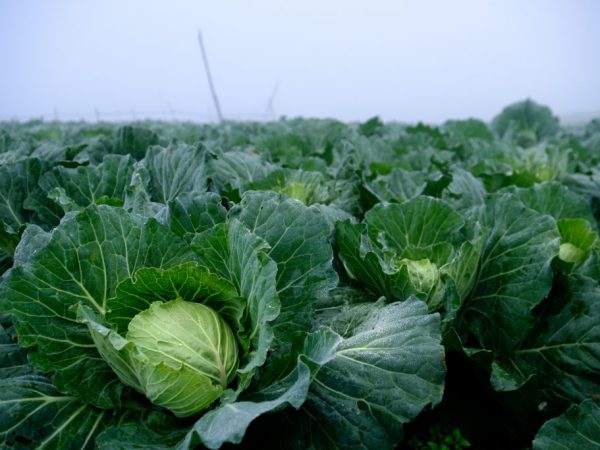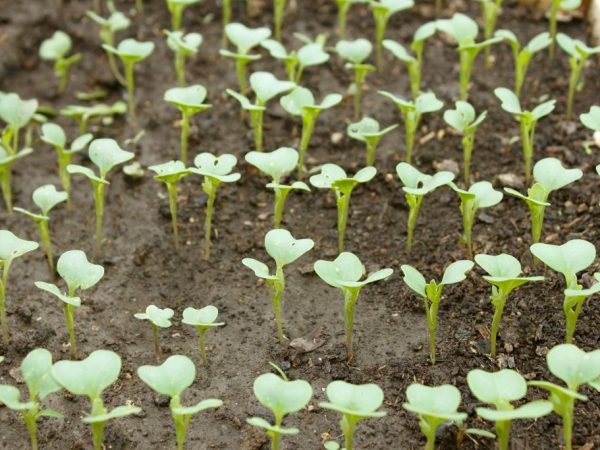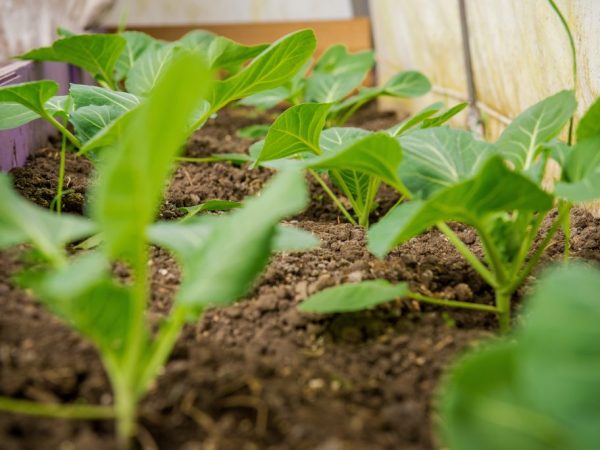How to grow cabbage outdoors
In order for the cultivation of white cabbage in the open field to bring a rich harvest, it is necessary to adhere to the correct planting and provide the culture with quality care.

How to grow cabbage outdoors
Variety selection
There are several main varieties of cabbage: white cabbage, Brussels sprouts, cauliflower and red cabbage. On the territory of our country, it is the white-headed variety that is more often found.
The most popular varieties for growing outdoors are Grabovskii vid, Stakhanovka, Sprinter, Kolobok and Transfer. They are characterized by resistance to negative environmental factors, which makes it easier to care for them at home.
If you grow products for making fresh salads, choose Marshmallow, Explosion or Bella varieties.
Kukharka or Stakhanovka are considered ideal types for pickles. For long-term storage at home, fruits of the Sugar Loaf, Uliy or Geyser varieties are suitable.
Outdoor cultivation
It is not easy to grow cabbage correctly, because in the open field, the crop is attacked by pests and diseases. It is especially important to take into account the shown soil moisture: an excess of moisture in the soil leads to diseases of the root system.
White cabbage varieties are grown in seedlings if they are planted in an area with a temperate or cool climate. Seedlings are hardened in advance to reduce the risk of diseases.
Particular attention is paid to the choice of the site: all varieties of white cabbage are photophilous. They should be planted in well-lit areas.
If you follow all the recommendations, it is easy to grow high quality products on your own.
Seedling preparation
It is better to give preference to the seedling planting method. To begin with, they are determined with seeds. They can be bought at a specialty store or used at home. Your own material should be properly processed:
- Place in warm water (about 60 ° C).
- Rinse thoroughly under running cold water.
- Treat with disinfectants and growth stimulants: oxychom, manganese solution or Bordeaux liquid. The seeds are soaked for 20-30 minutes: this is enough to destroy all bacteria and microorganisms.
- Rinse under running water and place in the freezer.
The ideal time for sowing seeds is mid-March. It is better to plant seeds in separate containers: this significantly reduces the risk of damage to the root system when transplanted into open ground.
Optimal conditions for seed germination

Seedlings must be hardened
Until the first shoots begin to form, a temperature of about 22 ° C should be observed in the room. After 2 weeks, it should be lowered to 10 ° C. From the moment the leaves begin to form, the temperature is raised again to 18 ° C.
After the leaves appear, containers with seedlings are placed on the windowsill of the sunny side of the house. Every day, the containers are turned on the opposite side to the street. This allows the seedlings to form evenly.
When 2 pairs of leaves are formed on a plant, it is taken outside daily. The first few days, the seedlings of white cabbage should be outside for no more than 30 minutes. Every day, the ventilation interval is increased to harden the plant for future planting in open ground.
Soil requirements
The future harvest and the quality of seedlings depend on the soil. You should pay attention to the acid-base balance of the soil: it should not exceed 4%. If the level is much higher, then you need to process the land with lime.
- the crop in question is not planted after radishes, tomatoes or beets: these vegetables negatively affect soil fertility;
- preference is given to areas where cucumbers, peas, beans or potatoes were previously grown.
- choose only fertile soils, they should contain a large amount of peat; preference is given to loose soil without clay.
Landing in open ground
Sowing white cabbage in open ground is possible only after 2-3 pairs of leaves have formed on the plant. They are waiting for the soil to warm up to the optimum temperature of 13-15 ° C. The best dates for planting are late May-early June.
For the correct planting of white cabbage, you should adhere to a certain scheme. Usually the distance between the rows should be 75 cm, but the distance between the holes should be 50 cm.
Planting agrotechnics is based not only on a certain distance, but also on preparatory measures. Before planting the culture at the indicated time, at least 1 liter of water is poured into each well and about 500 g of mullein is poured. This increases the fertility of the soil and simplifies the adhesion of the root system to the soil.
Care advice

Proper care will increase the yield of plants
It is important to follow the rules for growing and caring for white cabbage. Plants are watered no more often than once every 3-4 days. Watering is carried out only in the morning or in the evening.
The culture needs fertilization. The first feeding is carried out 3 weeks after planting in open ground, it involves the use of phosphorus compounds or organic fertilizers (manure or mullein). The second feeding is carried out 14 days after the first. At this time, it is advisable to use potassium and phosphorus. Further fertilization is applied when growth retardation or poor fruit formation.
Caring for white cabbage involves regular weeding and weeding. The soil is loosened every time after watering. The depth of weeding should be 6-8 cm. This condition is necessary for the root system to receive the required amount of nutrients and oxygen.
Diseases and pests
Growing white cabbage in the open field is fraught with the appearance of diseases and pests. Among the most common problems are flies, butterflies, aphids, flea beetles or keels.
The main symptom of the appearance of flies is the destruction of the root system. Early planting is a preventive measure. By the beginning of May, when the fly is actively multiplying, the plant will completely take root. The culture is treated with insecticidal preparations. Processing is carried out once a week until the complete destruction of the parasite.
You can get rid of fleas with the help of an ash solution (4 kg of wood ash are used for 10 liters of water). They also spray the bush with soapy water or Bordeaux liquid. Professional insecticides or soap solution are effective methods of aphid control. To get rid of pest butterflies, you can use a tincture of potato or tomato tops.
Keel fungal disease manifests itself as follows: growths form on the plant, the leaves wither. There is no cure for this disease. The most effective method of saving beds is to remove all damaged bushes and burn them away from the garden.After that, the soil is treated with lime, for 3-6 years no crops are planted in this place.
Harvesting and storage technology
Harvesting is done only after the fruit reaches a weight of 1 kg. You can wait for the weight to increase. Harvested in sunny weather. You can chop off the cabbage heads and stack them in your basement. The late ones are uprooted, and then they are dug into the basement ground. It is important to keep the stalk 3 cm long: this greatly reduces the risk of injury or infection.
Large cabbage is stored on shelves, but so that the heads do not touch. Each fruit is suspended on its own stump. According to the technology, when positioning, it is important to maintain the correct distance: about 25 cm from each other.
The temperature in the cellar should always be around 1 ° C. You can store the crop in such conditions until the beginning of May. Attention is also paid to the humidity in the basement: the recommended level is 90-95%.
Conclusion
Each summer resident tries to grow vegetables on their own on their own. In order not to make mistakes that lead to a decrease in yield, follow the basic recommendations.


